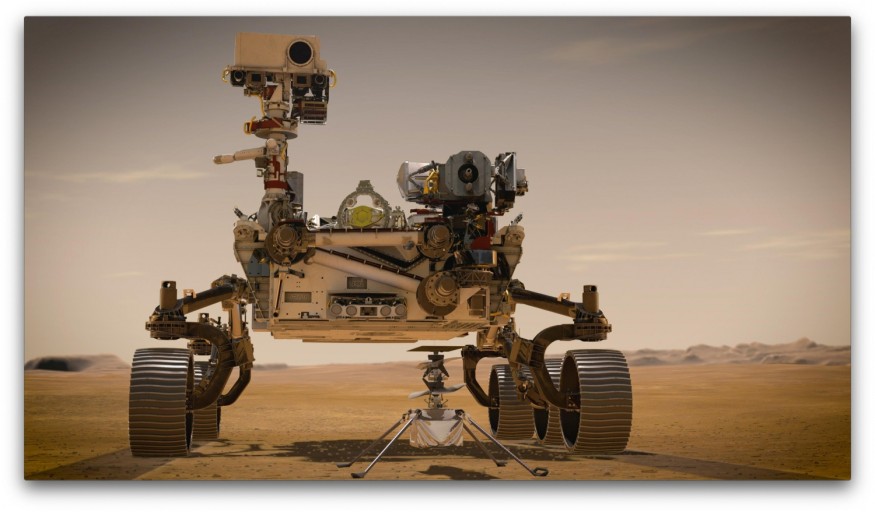Over the weekend, NASA released the first images of the rover's companion, the Ingenuity helicopter. Perseverance shed her defensive shield, revealing Ingenuity for the first time to the bright Martian sunshine.

"Away goes the debris shield, and here's our first look at the helicopter. It's stowed sideways, folded up and locked in place, so there's some reverse origami to do before I can set it down," NASA tweeted on Sunday.
Away goes the debris shield, and here’s our first look at the helicopter. It’s stowed sideways, folded up and locked in place, so there’s some reverse origami to do before I can set it down. First though, I’ll be off to the designated “helipad,” a couple days’ drive from here. pic.twitter.com/E9zZGQk5jQ
— NASA's Perseverance Mars Rover (@NASAPersevere) March 21, 2021
NASA said Perseverance is heading for the "helipad," the official location for landing Ingenuity on the moon. A camera fixed on the end of the rover's robotic arm provides a glimpse under the belly.
The rover has been discarding some of its components, too. Perseverance left behind an ejectable belly pan earlier this month, inspiring Creativity to build a debris cover. Those components have served their purpose and are no longer needed.
While Perseverance will spend a few days driving itself to Ingenuity's flight zone after lowering the debris cover, NASA officials intend to announce in a press conference tomorrow March 23 at 1:30 p.m. EDT. You can watch the event directly via the space agency.
Is Every Step a Win?
It would take a lot of effort to fly the first helicopter on Mars, The Verge reported. Engineers at NASA's Jet Propulsion Laboratory have to prepare for a Martian atmosphere 100 times thinner than Earth's. Meaning, the craft would have to work much harder to get itself off the ground than Earth-bound helicopters.
And Ingenuity isn't just a more effective toy drone. It's an $85 million spaceship designed to survive a tumultuous journey to Mars, from the aggressive rumbling at the launch last summer to Perseverance's seven-minute landing sequence via Mars' atmosphere in February.
Its architecture must also adhere to the international Outer Space Treaty of 1967, allowing signatories to ensure that their satellites do not pollute other planets' habitats.
ALSO READ : NASA's Perseverance Rover Finally Lands on Mars
How Ingenuity Would Look Like
A rectangular solar panel mounted above the craft's four carbon fiber blades allows the craft to cram all that strength into its four-pound frame. The panel also houses a small telecommunications system that can connect with the Mars Helicopter Base Station, a node on Perseverance's body, from as far as nine football fields away. The Base Station will assist with signal relaying back to Earth.
A tissue box-sized fuselage sits underneath the blades. It is housing flight sensors, two cameras, batteries, and mini "survival heaters" to keep Ingenuity warm during the night on Mars. A 13-megapixel color camera facing the horizon on one of the two cameras will snap and send photographs to Perseverance mid-flight. The other camera has a 0.5-megapixel black-and-white sensor used for navigation.
In particular, Ingenuity will aim to perform five flight tests within 30 days. If the experiments are successful, NASA may use similar helicopter technology in other missions to explore areas that wheeled rovers can't, such as caves, tunnels, and mountaintops. Even if the experiments are a huge hit, Ingenuity won't fly again after 30 days.
Ingenuity will lie on the Martian surface for forever after the 30-day timeframe has passed. If the craft's first flight attempt fails, Balaram says his team will always be proud of the accomplishments they've already made.
Check out more news and information on Space on Science Times.












